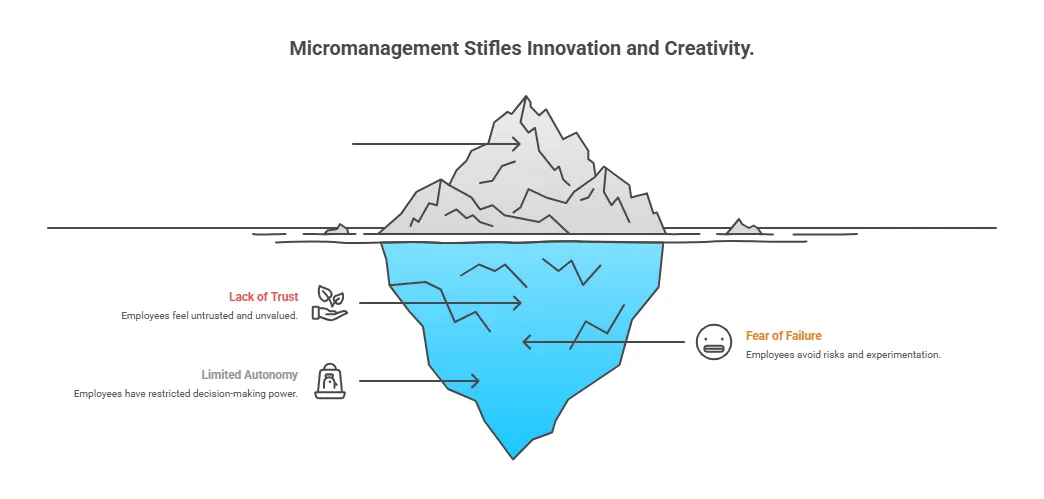Gen Z Workers Refuse to Be Monitored/Micromanaged – And They're More Productive Than Ever

Summary:
-
Gen-Z workers deliver the best results when they are trusted. So cut micromanagement.
-
Cut down on meeting blocks and distractions. Focused tasks help the new generation to deliver solid outcomes.
-
Young employees work best when they are given freedom and creativity.
Managers often struggle with a simple question: how do you boost productivity without hovering over your team?
I faced this too.
At first, I relied on check-ins and reports only to see motivation plummet. The turning point came when I realized that less control was the answer.
Only when I focused on freedom did my Gen Z team unlock their true potential!
Micromanagement was a Disaster for My Gen Z Employees
In the early days, I relied on micromanagement, constant updates, and weekly reports. Wish I had introduced insightful employee monitoring tools before!
I thought I was keeping everyone aligned. However, it turned out that it only created unnecessary pressure.
My team members felt suffocated, and I became isolated. From an anonymous survey, I learned that my Gen Z employee felt I didn’t trust them.
And it’s not just my team. A MyPerfectResume study found that 79% of employees are not engaged in their work. The numbers made sense to me because I saw that trend firsthand.
Make your team’s activity visible
Gradually, I Understood Gen-Z Work Style
Gen Z approaches work differently from past generations. They value ownership over instructions.
Once I shifted from giving orders to setting outcomes, I noticed a change. People took more initiative. They solved problems creatively. And started delivering results that exceeded my expectations.

In fact, one of our youngest employees completely redesigned part of our onboarding workflow.
By introducing an automated knowledge-sharing document, she cut the average onboarding time from 14 days to 9 days!
That’s a 35% improvement, and it happened only because she was given enough freedom to experiment.
Productivity improvement strategies
Boost your team’s productivity
Small Changes that Clicked
The changes did not fall into place overnight. I had to adjust myself and the way things were:
- Weekly outcomes, not daily updates: Instead of daily updates, I focused on weekly online reports.
- Fewer interruptions: We prioritized async communication and used project management tools.
- Clear ownership: Every project had a single point of responsibility.
These small steps created space for independent work without being too demanding.
My Productivity Hacks Paid Off
Along the way, I discovered a few strategies that worked especially well for our team:
- No-meeting blocks: Two days per week with zero meetings. Our output on those days rose by nearly 20%, according to task completion data.
- Flexible hours: By removing the fixed schedule, everyone focused on their own peak working hours.
- Outcome visibility: Tools like Apploye’s productivity tracker made progress measurable without making anyone feel micromanaged.
These weren’t gimmicks. They were signals of trust-and they motivated the team more than constant oversight ever did.
Track productivity for better outcome
My Realization: Micromanagement is the Kryptonite of Creativity
One of the biggest lessons I learned is that micromanagement stifles innovation.
When you micromanage, employees always play it safe and stop experimenting. But when they feel trusted, they push boundaries, try new ideas, and come up with better solutions.

For example, when I stopped requiring approval for every design mockup, our design team introduced a new UI layout.
After A/B testing, the layout increased user engagement on one of our product pages by 18%. That kind of improvement never would have happened under a “wait-for-approval” model.
Increase employee engagement easily
Why Trusting My Gen Z Employees Worked for Me
After realizing the effect of trust, I quickly thought of how it worked like magic.
- Letting the employees run free made them more creative
- Focusing on specific outcomes without any fixed tasks created scope for innovation
- Open feedback sessions resolved any recurring blockers
These small changes actually resulted in a huge impact at the end of the month.
So, if you’re leading a team, especially with Gen Z employees, here’s what I’d highly recommend:
- Trust as a tool: Give autonomy and watch how responsibility naturally follows.
- Focus on results: Shift conversations from “what are you working on right now?” to “what are we trying to achieve this week?”
- Respect flexibility: Make flexible ways for your employees to be creative, according to their needs.
Bring trust with respectful tracking
Final thoughts
Gen Z workers showed me that when you trust them, they reinvest the old ways with more innovative strategies.
So, if you’re at the same place as I was, think about what you need to do! Because if you can’t keep up with the new generation, your growth will come to a standstill!
